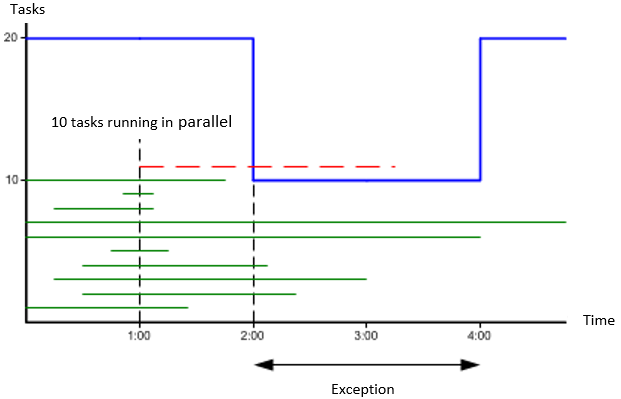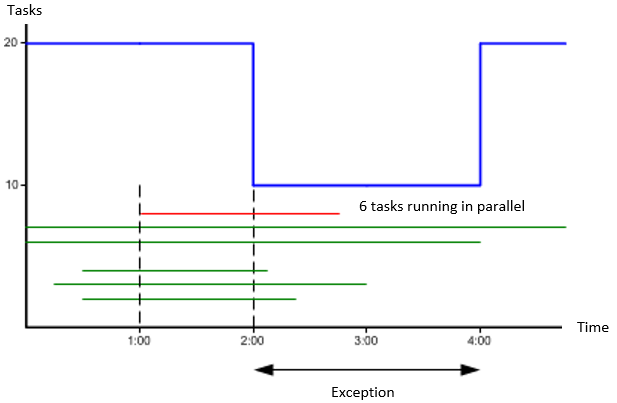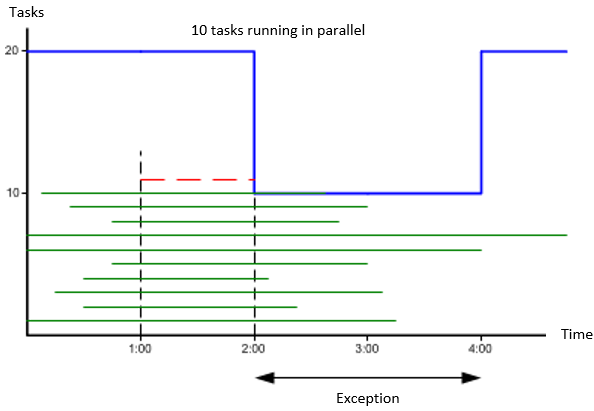Considering ERT in Queue Objects
As a developer and object designer, or as an administrator user, you define the Queue objects in which your executable objects will be processed. This page describes the Consider ERT option in the Queue object definition.
If you activate this option, the system checks whether the task limit of future exceptions would be exceeded before it executes a task assigned to the Queue object. This check takes into account the Estimated Runtime (ERT) of the following tasks in the Queue:
- Tasks that will start in the future
- Tasks that are already active at start time
A task does not start if the ERT check predicts that the Queue limits (max. slots) will be exceeded.
If the maximum number of parallel running tasks has already been reached or exceeded at an object start time, the state of the task changes to a waiting condition (Waiting for queue slot).
The following examples explain this check in more detail.
Example 1
The following diagrams show the number of tasks in a time line. The green lines depict the active tasks in the Queue. The beginning of a line indicates the tasks start time. The length of the green line corresponds to the task Estimated Runtime (ERT).
The blue line depicts the task limit (maximum slot) as defined in the Queue. The maximum available queue slots are reduced from 20 to 10 due to an exception that occurs from 02:00 am to 04:00 am.
An object assigned to the Queue object is processed at 1:00 am (red line). At this point in time, the Queue object already includes 10 active tasks.

An ERT check of the object to be started shows that the task would still be active at the time the exception applies (2:00 am). Thus, the system determines the number of parallel running tasks that would still be active at this point in time. The ERT calculation of the active tasks in the Queue indicates that only 5 tasks will still be active at 2:00 am. Thus, the task can start.

Example 2
Example 2 is similar to example 1. The green lines depict the active tasks of a Queue object. The blue line shows the course of the task limit.
An object assigned to the Queue object is activated at 1:00 am (red line). An ERT check of all active tasks shows that no queue slots will be available at the exception time (2:00). Executing a new object would exceed the maximum number of tasks running parallel that is allowed according to the Queue object definition. Thus, the task cannot start.

See also: